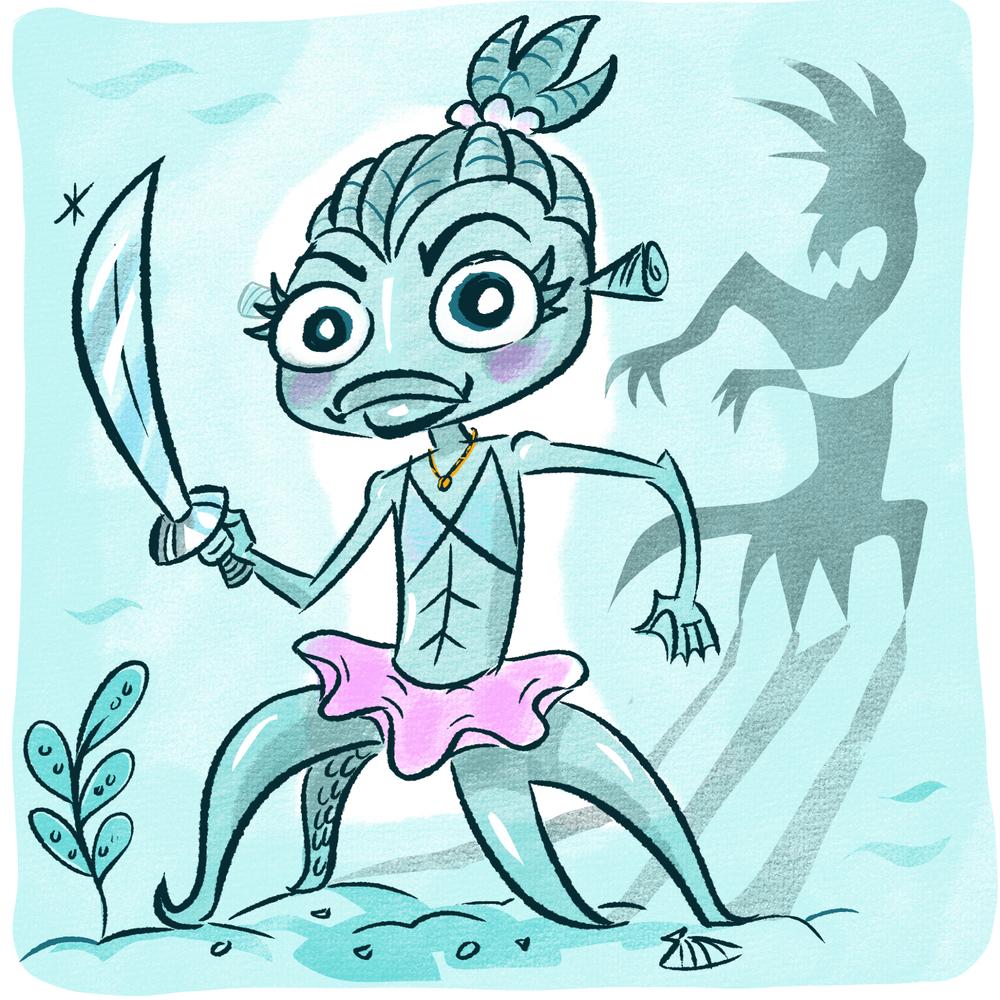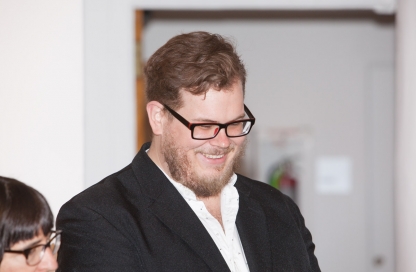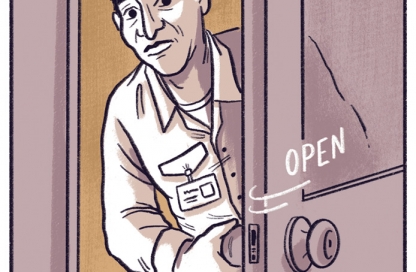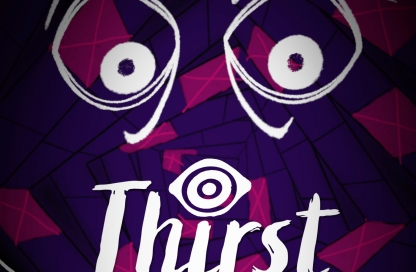Maura Condrick (’21) talks about her thesis story, ‘Periwinkle and the Lost Treasure’
We had a chance to chat with Maura Condrick (’21) about her fantastic thesis story, ‘Periwinkle and the Lost Treasure’. Be sure to follow her on Instagram and Twitter.
What is your thesis story titled, what is it about, and what medium did you decide on?
Periwinkle and the Lost Treasure is a fully illustrated graphic novel aimed at middle-grade kids, aged eight to twelve. It’s about a child who is lost at sea and saved from drowning by a magical cuttlefish, who turns the little girl into a sea creature and raises her as her own. Now twelve years old and called Periwinkle, the tentacled girl struggles with her very human emotions and ever-changing body as she finds her place in her undersea world. Nurture triumphs over nature when Periwinkle protects her adoptive family from her biological mother-a marauding pirate-who wreaks havoc while searching for her lost treasure.
Tell us a little bit about the process of deciding on telling this story. Did you always want it to be told in this medium?
I’m actually a storyboard artist and first envisioned this story as an animated film. But I love graphic novels and wanted to explore the visual language of pages and panels. There’s a richness to the storytelling and to the layers of information that can be shared, and there’s a kind of collaboration between artist and reader, who can choose what to look at and when.
Why are you the only one who could tell this story?
I think there are plenty of undersea adventures and pirate stories out there, but I wanted to explore childhood on the cusp. When I was growing up, difficult emotions were to be controlled or hidden, and that’s pretty unhealthy for a growing human. In this story, Periwinkle is always exposed and has to embrace what appears to be a weakness, but turns out to be a strength. I’m also interested in family themes, especially the mother-daughter relationship. And I love sea creatures, especially cephalopods like cuttlefish and octopuses. I enjoy drawing their gelatinous bodies and their ability to camouflage and squirt ink!
What theme(s) do you want people to connect with?
I hope there is both something new to think about and something familiar and universal. I always love stories that surprise me but also make me feel understood.
After graduation, how would you like the thesis story to help your career?
My thesis is a pitch packet for my graphic novel, Periwinkle And The Lost Treasure, which I am now showing to agents. I would love for Periwinkle to become my first published full-length graphic novel, and I would love to share more of my stories as picture books, graphic novels, or animated films.
Do you think you would have told this story if you’d never attended MFA Visual Narrative?
Definitely not. I have a lot of experience illustrating other people’s stories, but I have always gotten in my own way when it comes to creating for myself. I instinctively draw sequential stories but I never thought of myself as a writer. I didn’t know if I was capable of crafting an actual beginning-middle-ending kind of story that would make any sense. Turns out, you can learn these skills!
What tools did you use to create the story? Feel free to share a tip or two about them.
I used Photoshop on my trusty Cintiq, with Kyle Webster brushes that mimic watercolor paint and paper, brushes and ink. I actually love to work traditionally, but I moved from Los Angeles to Boston, to New York over the course of the project, and having everything on the computer kept the project organized and portable.







